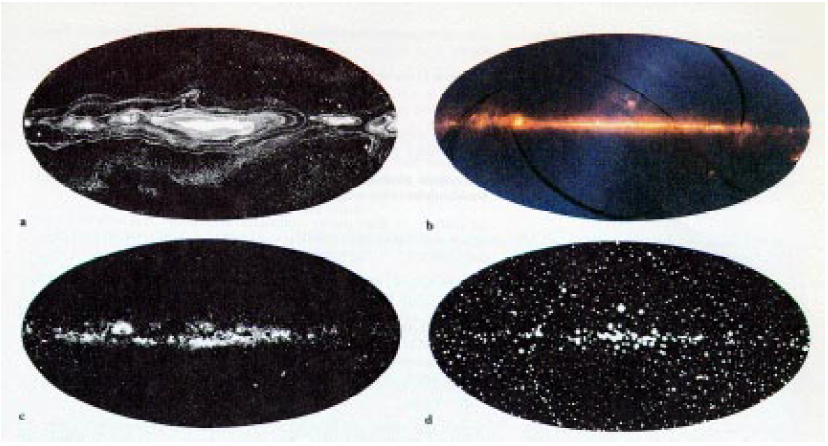
تاريخ الفيزياء

علماء الفيزياء


الفيزياء الكلاسيكية

الميكانيك

الديناميكا الحرارية


الكهربائية والمغناطيسية

الكهربائية

المغناطيسية

الكهرومغناطيسية


علم البصريات

تاريخ علم البصريات

الضوء

مواضيع عامة في علم البصريات

الصوت


الفيزياء الحديثة


النظرية النسبية

النظرية النسبية الخاصة

النظرية النسبية العامة

مواضيع عامة في النظرية النسبية

ميكانيكا الكم

الفيزياء الذرية

الفيزياء الجزيئية


الفيزياء النووية

مواضيع عامة في الفيزياء النووية

النشاط الاشعاعي


فيزياء الحالة الصلبة

الموصلات

أشباه الموصلات

العوازل

مواضيع عامة في الفيزياء الصلبة

فيزياء الجوامد


الليزر

أنواع الليزر

بعض تطبيقات الليزر

مواضيع عامة في الليزر


علم الفلك

تاريخ وعلماء علم الفلك

الثقوب السوداء


المجموعة الشمسية

الشمس

كوكب عطارد

كوكب الزهرة

كوكب الأرض

كوكب المريخ

كوكب المشتري

كوكب زحل

كوكب أورانوس

كوكب نبتون

كوكب بلوتو

القمر

كواكب ومواضيع اخرى

مواضيع عامة في علم الفلك

النجوم

البلازما

الألكترونيات

خواص المادة


الطاقة البديلة

الطاقة الشمسية

مواضيع عامة في الطاقة البديلة

المد والجزر

فيزياء الجسيمات


الفيزياء والعلوم الأخرى

الفيزياء الكيميائية

الفيزياء الرياضية

الفيزياء الحيوية

الفيزياء العامة


مواضيع عامة في الفيزياء

تجارب فيزيائية

مصطلحات وتعاريف فيزيائية

وحدات القياس الفيزيائية

طرائف الفيزياء

مواضيع اخرى
Classifying the Source
المؤلف:
Diane Fisher Miller
المصدر:
Basics of Radio Astronomy
الجزء والصفحة:
p45
2-3-2016
2428
Classifying the Source
Radiation whose direction can be identified is said to originate from a discrete source. A discrete source often can be associated with a visible (whether by the naked eye or by optical telescope) object. For example, a single star or small group of stars viewed from Earth is a discrete source. Our sun is a discrete source. A quasar is a discrete source. However, the definition of “discrete,” in addition to the other terms used to describe the extent of a source, often depends upon the beam size of the radio telescope antenna being used in the observation.
Discrete sources may be further classified as point sources, localized sources, and extended sources.
A point source is an idealization. It is defined as a source that subtends an infinitesimally small angle. All objects in reality subtend at least a very tiny angle, but often it is mathematically convenient for astronomers to regard sources of very small extent as point sources. Objects that appear smaller than the telescope’s beam size are often called “unresolved” objects and can effectively be treated as point sources. A localized source is a discrete source of very small extent. A single star may be considered a localized source.
Emitters of radiation that covers a relatively large part of the sky are called extended sources. An example of an extended source of radiation is our Milky Way galaxy, or its galactic center (called Sagittarius A) from which radiation emissions are most intense.

An optical analogy to the extended source would be the view of a large city at night from an airplane at about 10 km altitude. All the city lights would tend to blend together into an apparently single, extended source of light. On the other hand, a single searchlight viewed from the same altitude would stand out as a single object, analogous to a localized or point source. The terms localized and extended are relative and depend on the precision with which the telescope observing them can determine the source.
Background radiation is radio frequency radiation that originates from farther away than the object being studied, whereas foreground radiation originates from closer than the object being studied. If an astronomer is studying a specific nearby star, the radiation from the Milky Way may be considered not merely an extended source, but background radiation. Or, if it is a distant galaxy being observed, the Milky Way may be considered a pesky source of foreground radiation. Background and foreground radiation may consist of the combined emissions from many discrete sources or may be a more or less continuous distribution of radiation from our galaxy. Cosmic background radiation, on the other hand, is predicted to remain as the dying glow from the big bang. It was first observed by Arno Penzias and Robert Wilson in 1965. (They won a Nobel Prize for this discovery in 1978). Much of background and foreground radiation tends to be of non-thermal origin. The cosmic background radiation, however, is thermal.
In the group of pictures below (from Griffith Observatory and JPL), the entire sky is shown at (a) radio, (b) infrared, (c) visible, and (d) X-ray wavelengths. Each illustration shows the Milky Way stretching horizontally across the picture. It is clear that radio wavelengths give us a very different picture of our sky.

 الاكثر قراءة في مواضيع عامة في علم الفلك
الاكثر قراءة في مواضيع عامة في علم الفلك
 اخر الاخبار
اخر الاخبار
اخبار العتبة العباسية المقدسة

الآخبار الصحية















 قسم الشؤون الفكرية يصدر كتاباً يوثق تاريخ السدانة في العتبة العباسية المقدسة
قسم الشؤون الفكرية يصدر كتاباً يوثق تاريخ السدانة في العتبة العباسية المقدسة "المهمة".. إصدار قصصي يوثّق القصص الفائزة في مسابقة فتوى الدفاع المقدسة للقصة القصيرة
"المهمة".. إصدار قصصي يوثّق القصص الفائزة في مسابقة فتوى الدفاع المقدسة للقصة القصيرة (نوافذ).. إصدار أدبي يوثق القصص الفائزة في مسابقة الإمام العسكري (عليه السلام)
(نوافذ).. إصدار أدبي يوثق القصص الفائزة في مسابقة الإمام العسكري (عليه السلام)


















